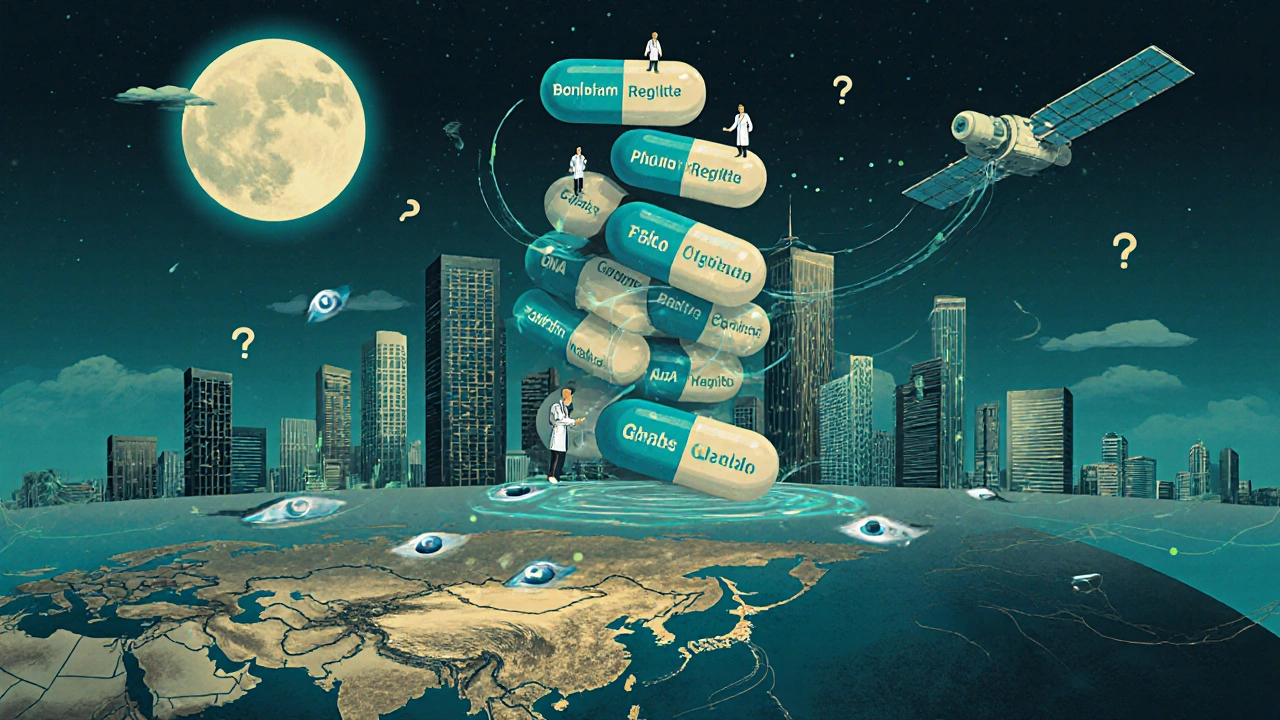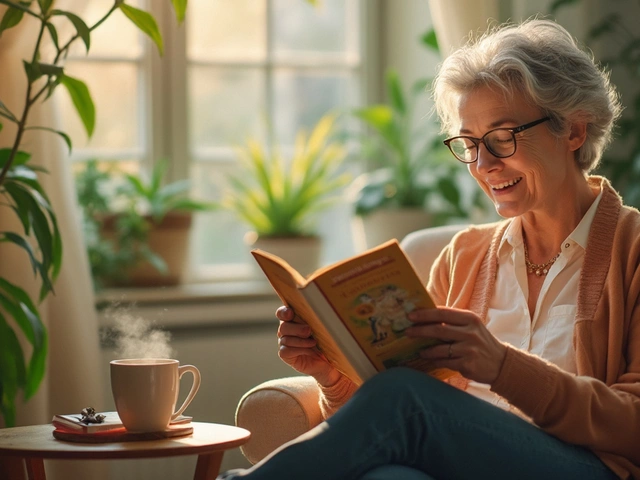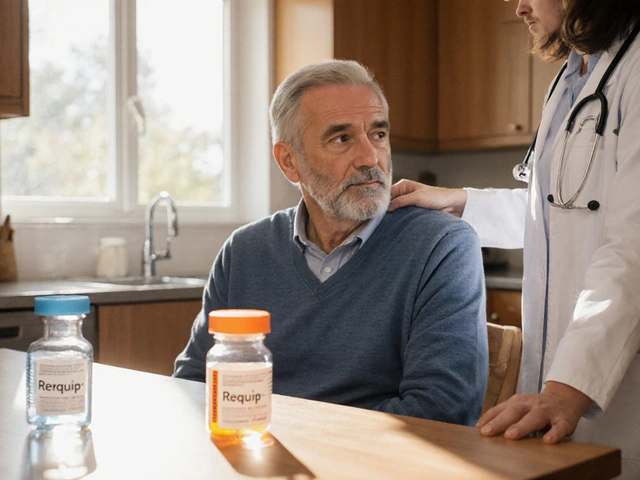Every time you pick up a prescription for a generic drug, you’re holding a product that had to pass one of the most tightly controlled manufacturing processes in the world. These pills, capsules, and injections aren’t cheap copies - they’re scientifically engineered to be identical in effect to their brand-name counterparts, often at 80-85% lower cost. But how exactly are they made? It’s not just mixing chemicals in a lab. It’s a multi-year, highly regulated journey that involves reverse engineering, precision engineering, and strict quality checks at every step.
Starting with the Brand-Name Drug: Reverse Engineering the Reference
The first step in making a generic drug isn’t manufacturing - it’s understanding. Manufacturers begin by studying the original brand-name drug, known as the Reference Listed Drug (RLD). This isn’t just reading the label. It’s taking the product apart - chemically analyzing every ingredient, down to the exact particle size of the active ingredient and the type of coating used. They need to know what makes the brand-name drug work: how fast it dissolves, how it’s absorbed, and how stable it is over time. This phase is called formulation development, and it follows the Quality by Design (QbD) framework. That means manufacturers don’t just guess at the recipe. They identify Critical Quality Attributes (CQAs) - things like dissolution rate, tablet hardness, and purity - then figure out which raw materials (Critical Material Attributes) and production steps (Critical Process Parameters) directly affect those attributes. A tiny change in lactose particle size, for example, can throw off how quickly the drug releases in your body. That’s why manufacturers spend months testing dozens of combinations before settling on one.The Seven Stages of Manufacturing: From Powder to Pill
Once the formula is locked in, production begins. The process follows seven precise stages, each monitored to meet FDA standards:- Formulation: The active pharmaceutical ingredient (API) is mixed with inactive ingredients (excipients) like fillers, binders, and lubricants. These help the tablet hold shape, dissolve properly, and be easy to swallow.
- Mixing and Granulation: The powder blend is turned into granules - small clumps that flow evenly through machinery. This ensures every tablet gets the exact same dose.
- Drying: Moisture is removed to prevent degradation. Too much water can cause the drug to break down before it even leaves the factory.
- Compression and Encapsulation: Dry granules are pressed into tablets using high-speed machines, or filled into capsules. Each tablet must weigh within ±5% of the target for smaller pills, or ±7.5% for larger ones.
- Coating: Tablets get a thin outer layer. This isn’t just for looks - it can control how fast the drug releases, protect it from stomach acid, or mask a bitter taste.
- Quality Control: At every stage, samples are tested. Tablets are checked for weight, hardness, dissolution rate, and chemical purity. Dissolution testing is critical: the generic must release the drug at the same rate as the brand-name version, within the FDA’s 80%-125% bioequivalence range.
- Packaging and Labeling: Finished products are sealed in blister packs or bottles with tamper-evident seals. Labels must list the same active ingredient, strength, and usage instructions as the brand-name drug - but they can’t copy the brand’s logo, color, or shape. U.S. trademark law prevents generics from looking identical to avoid confusion.
Regulatory Approval: The ANDA Pathway
Manufacturing the drug is only half the battle. To sell it in the U.S., a company must get approval through the Abbreviated New Drug Application (ANDA) process, created by the 1984 Hatch-Waxman Act. Unlike brand-name drugs, which require years of clinical trials, generics don’t need to prove safety or effectiveness again. Instead, they prove they’re bioequivalent. Bioequivalence means the generic drug performs the same way in the body as the original. This is tested in 24-36 healthy volunteers who take both the brand and generic versions. Blood samples are taken over time to measure how much of the drug enters the bloodstream (Cmax) and how long it stays there (AUC). The results must fall within 80%-125% of the brand-name drug’s values, with 90% confidence. If they don’t, the FDA rejects the application. The ANDA submission itself is massive - often 5,000 to 10,000 pages of data, including hundreds of analytical methods, batch records, and stability studies. The FDA typically takes 10-17 months to review it, though complex drugs (like inhalers or topical creams) can take up to three years.
Factory Rules: CGMP and Cleanrooms
You can’t just make generic drugs in any warehouse. Every facility must follow Current Good Manufacturing Practices (CGMP), enforced by the FDA. These rules cover everything from air quality to employee training. - Cleanrooms must be classified as ISO Class 5-8, depending on the stage of production. That means air is filtered to remove dust and microbes. A Class 5 room, used for sterile filling, has fewer than 3,500 particles per cubic meter. - Temperature and humidity are tightly controlled: 20-25°C and 45-65% relative humidity to prevent degradation. - Every batch must be documented. If a tablet fails a hardness test, the company must investigate within 24 hours, fix the root cause, and document everything. Change control systems require notifying the FDA 30 days before making major changes to the process or ingredients. The FDA inspects facilities regularly. In 2023, the most common violations were: inadequate investigation of failed tests (37% of warning letters), poor process validation (29%), and weak quality unit oversight (24%).Complex Generics: The Harder Frontier
Not all generics are created equal. Simple pills - like metformin or lisinopril - are easy to copy. But complex products like inhalers, injectables, topical creams, or extended-release tablets are much harder. Why? Because you can’t always measure how they work just by testing the drug in a lab. You need to know how it behaves in the body - and that’s harder to predict. For example, a generic version of the skin cream Clobetasol Propionate took seven years and $47 million to develop because matching the original’s skin penetration profile was nearly impossible. Even small changes in the cream’s base could make it absorb too fast or too slow. The FDA now has a dedicated Complex Generic Products Initiative, with 127 product-specific guidances published by the end of 2023 to help manufacturers navigate these challenges. These products face fewer competitors - often just 2-5 - and hold their prices better than simple generics, which can lose 70-80% of their value within two years of launch.
Quality Concerns and Real-World Outcomes
Some people worry that generics aren’t as reliable. After all, there are dozens of manufacturers for common drugs like atorvastatin. But data shows otherwise. A 2023 survey by the Association for Accessible Medicines found that 89% of pharmacists have high confidence in generic drug quality. Only 3% reported any meaningful difference in patient outcomes. There have been recalls - like Teva’s 2021 recall of 14 products due to CGMP violations at its Puerto Rico plant. But those are exceptions, not the rule. The FDA’s inspection database shows that 90% of generic drug facilities pass inspections on the first try. Even critics like Dr. Jerry Avorn of Harvard admit that while there may be slight differences in dissolution profiles between generic versions, these rarely translate to clinical problems - except in rare cases involving drugs with a narrow therapeutic index (like warfarin or levothyroxine). Even then, switching between generics is generally safe if monitored.What’s Next? Technology and Global Shifts
The future of generic drug manufacturing is moving fast. The FDA has approved 17 facilities using continuous manufacturing, where drugs are made in a constant flow instead of in batches. This cuts production time from weeks to hours and improves consistency. One company using this method achieved 99.98% batch acceptance - far higher than the 95% average with traditional methods. AI is also being used for quality control. Pfizer’s pilot program reduced visual inspection errors by 40% using machine learning to spot defects in tablets. Digital twins - virtual models of manufacturing lines - are being tested to predict failures before they happen. Globally, 78% of the active ingredients in U.S. generics come from China and India. That’s raised concerns about supply chain risks, especially after pandemic-related delays. But the market is growing anyway. With $75 billion in branded drugs set to lose patent protection by 2027, the demand for generics is only increasing. The Association for Accessible Medicines predicts $1.8 trillion in total savings by 2028.Why It Matters
Generic drugs aren’t just cheaper alternatives. They’re the backbone of affordable healthcare. In the U.S., 90% of prescriptions are filled with generics. Without them, millions of people couldn’t afford their medications. The process to make them is long, complex, and tightly regulated - not because it’s easy, but because it has to be perfect. The next time you pick up a generic prescription, remember: it’s not a shortcut. It’s a triumph of science, regulation, and precision manufacturing - all working together to keep health care within reach.Are generic drugs as safe as brand-name drugs?
Yes. The FDA requires generic drugs to meet the same strict standards for safety, strength, quality, and performance as brand-name drugs. They must contain the same active ingredient, work the same way in the body, and have the same risks and benefits. Bioequivalence testing ensures they deliver the same amount of medicine at the same rate.
Why do generic drugs look different from brand-name drugs?
By U.S. law, generic drugs cannot look identical to brand-name versions to avoid confusion. This means they can have different colors, shapes, or flavors. But these differences are only in inactive ingredients - they don’t affect how the drug works. The active ingredient and dosage remain the same.
How long does it take to make a generic drug?
It typically takes 3-4 years and $5-10 million to develop and get approval for a simple generic drug. Complex generics - like inhalers or topical creams - can take 7-10 years and cost over $50 million. The FDA review process alone averages 10-17 months, but can extend to 36 months for difficult products.
Do generic drugs have the same side effects as brand-name drugs?
Yes. Because they contain the same active ingredient and work the same way, generic drugs have the same side effects as their brand-name counterparts. Any differences in side effects are usually due to variations in inactive ingredients - like fillers or dyes - which rarely cause issues. If you notice a change after switching, talk to your pharmacist or doctor.
What’s the difference between an ANDA and an NDA?
An NDA (New Drug Application) is submitted by brand-name manufacturers to get approval for a completely new drug. It requires years of clinical trials to prove safety and effectiveness. An ANDA (Abbreviated New Drug Application) is for generics. It skips clinical trials because it relies on the brand-name drug’s data, focusing instead on proving bioequivalence and manufacturing quality.
Why are some generic drugs more expensive than others?
Price differences come from competition and complexity. Simple generics with many manufacturers (like metformin) can cost pennies because of fierce competition. Complex generics - like inhalers or extended-release pills - have fewer competitors, so prices stay higher. Also, manufacturers with better quality systems and advanced technology may charge more, but they often deliver more consistent results.





Scott Macfadyen
November 18, 2025 AT 21:34Whoa. I had no idea generic drugs went through this much scrutiny. I always thought they were just cheap knockoffs. This is wild - it’s basically reverse-engineering a Rolex with a flashlight and a spreadsheet.
Denise Cauchon
November 19, 2025 AT 13:16OMG I JUST REALIZED MY BLOOD PRESSURE MED IS A SCIENCE FICTION NOVEL IN PILL FORM 😱
Andrea Johnston
November 21, 2025 AT 11:07Let’s be real - if you think your $3 generic is ‘just as good’ as the brand, you’re either naive or you’ve never had a bad batch. I switched to a different generic last year and felt like I was walking through molasses for two weeks. The FDA doesn’t care about your personal experience - only their 80-125% magic number.
Chloe Sevigny
November 23, 2025 AT 03:39The entire paradigm of bioequivalence is a statistical illusion dressed in regulatory finery. The 80-125% confidence interval is not a biological truth - it’s a political compromise between patent expiration and pharmaceutical monopolies. We mistake statistical equivalence for therapeutic identity, and then wonder why patients report ‘differences’ - because their bodies aren’t p-values.
Victoria Malloy
November 23, 2025 AT 15:51This is actually so comforting to read. I’ve been scared to switch to generics for years, but knowing how much care goes into it makes me feel way better. Thank you for explaining this so clearly.
Gizela Cardoso
November 23, 2025 AT 21:57I work in a pharmacy and can confirm - most patients never notice a difference. The ones who do? Usually just anxious about change. But hey, if they feel better sticking with the brand, we let them. Health isn’t just about cost - it’s about peace of mind too.
Alex Czartoryski
November 24, 2025 AT 04:29And yet China makes 78% of the API. So you’re telling me my $2 generic heart med was made in a factory where the air quality is… what? Maybe ISO Class 10? And the inspectors fly in once a year? I’m not scared - I’m just mildly horrified.
Angela J
November 25, 2025 AT 17:29EVERYTHING IS CONTROLLED. EVERY SINGLE PILLS. THEY PUT MICROCHIPS IN THEM. THAT’S WHY THEY LOOK DIFFERENT - SO THEY CAN TRACK YOU. THE FDA IS WORKING WITH BIG PHARMA TO MONITOR YOUR MOODS THROUGH YOUR MEDS. I SAW IT ON A YOUTUBE VIDEO.
Sameer Tawde
November 26, 2025 AT 15:04This is why India and China lead generics - they’ve mastered scale + precision. But the real heroes? The QC technicians who stare at tablets under microscopes for 12 hours straight. Give them a raise.
Alex Boozan
November 27, 2025 AT 20:32Let me guess - you think the FDA is some noble guardian of public health? Nah. They’re a regulatory capture circus. The same consultants who help Big Pharma design their NDA also write the ANDA guidelines. The ‘bioequivalence’ standard? A loophole designed to let generics flood the market while keeping prices artificially high. It’s not science - it’s corporate theater.
mithun mohanta
November 28, 2025 AT 18:58Bro… the fact that you need 10,000 pages of data to make a $3 pill? That’s not ‘science’ - that’s bureaucratic performance art. And don’t get me started on ‘Critical Quality Attributes’ - sounds like something a management consultant made up after too much espresso. Real medicine is in the patient’s body - not in some lab’s HPLC printout.
Evan Brady
November 29, 2025 AT 09:10Continuous manufacturing is the future - it’s like brewing beer but with life-saving chemicals. One factory I visited had a digital twin that predicted a tablet defect 3 hours before it happened. AI isn’t replacing humans - it’s making them smarter. And yeah, the cost savings? Astronomical. We’re talking billions saved every year.
Ram tech
November 30, 2025 AT 09:30generic drugs r overrated. why do they even bother? just give people the brand name. who cares if its 50 bucks? i mean… health is priceless right? lol
Jeff Hakojarvi
December 1, 2025 AT 09:57Just wanted to say - if you're worried about switching generics, talk to your pharmacist. They know which batches are solid and which ones have had issues. And if you feel weird after switching? Don't ignore it. Your body talks - you just gotta listen. You're not crazy, you're just paying attention.